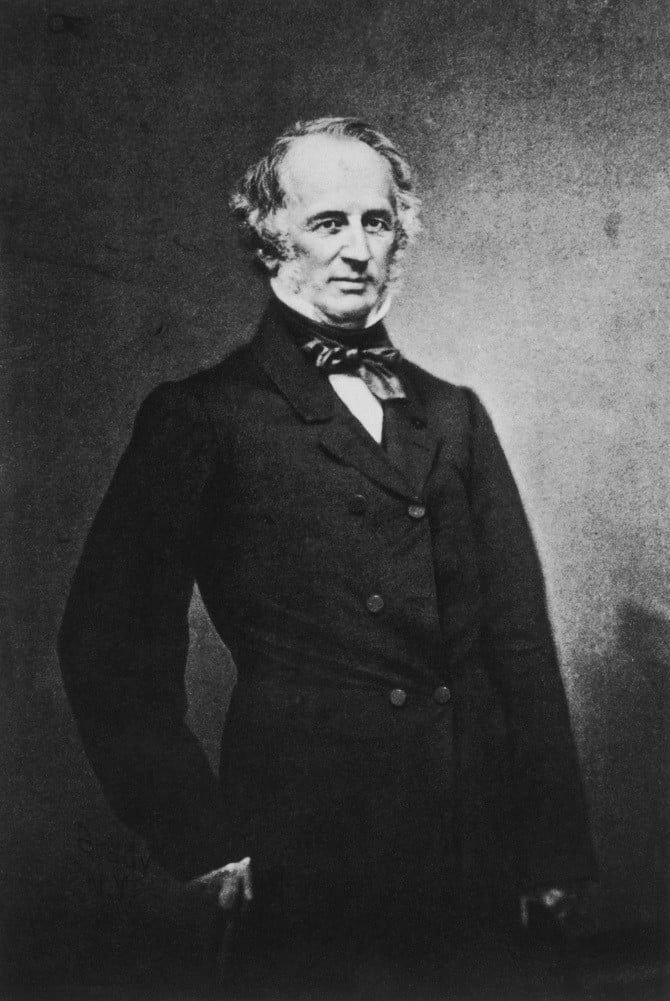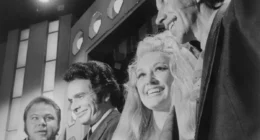Before there was a Bezos, a Musk, or a Walton, there was Cornelius Vanderbilt—a man so wealthy, so powerful, and so obsessed with winning that he built an empire from nothing and died richer than the U.S. Treasury. His descendants were American royalty before the term even existed, dripping in Gilded Age glamor, throwing parties that made Versailles look casual, and building mansions so large they made Fifth Avenue sag.
By the early 20th century, the Vanderbilt name was synonymous with outrageous wealth. They owned railroads, controlled shipping routes, and constructed castles in Manhattan and summer palaces in Newport. They were titans, tycoons, and social royalty. The idea that this family could one day run out of money seemed laughable—impossible even.
And yet… it happened. In just a few generations, the Vanderbilts went from the richest family in the world to financially irrelevant. Mansions were bulldozed. Trust funds vanished. By 1973, not a single living descendant was even a millionaire. This is the story of how America’s first mega-fortune was made—and then spectacularly lost.
The Rise: Cornelius “Commodore” Vanderbilt
The Vanderbilt saga begins with Cornelius Vanderbilt, born on Staten Island in 1794. He dropped out of school at age 11 to work in the shipping industry. In 1810, with a $100 loan from his mother, he launched a passenger ferry business.
Cornelius, nicknamed “The Commodore,” was ambitious, rude, and by most accounts not especially pleasant. But he was a ruthless and highly effective businessman. Over time, he built a fleet that challenged Robert Fulton’s monopoly on trade between New York and New Jersey. His legal battle against Fulton laid the groundwork for modern Interstate Commerce law.
He expanded into steamboats, then the railroad industry—a sector that would define the family’s empire. His company, New York Central, became a dominant force, and he monopolized rail service into and out of New York City. Through strategic acquisitions, he also gained control of major lines in the Midwest and Canada. He even spearheaded the creation of Grand Central Station, cementing his dominance in transportation.
Peak Wealth: The Richest Man in America
When Cornelius died in 1877, he was worth $100 million. Adjusted for inflation, that’s $185 billion today, making him one of the richest people in American history, and one of the richest people of all time.

Hulton Archive/Getty Images
William Vanderbilt: The Empire Expands
Cornelius had thirteen children, but openly expressed disappointment in all of them. He felt that they wouldn’t amount to much. However, his son William (Billy) proved to have a head for business (after recovering from a nervous breakdown, that is), and eventually took over as head of operations in the family’s railroad business. When Cornelius passed away, he left 95% of his estate to William and William’s four sons. The remaining $5 million was divided among his nine daughters and one other surviving son. His wife also received $500,000, their home, and a handful of shares in the railroad company.
True to his father’s expectations, William grew the Vanderbilt fortune and empire exponentially. The Vanderbilts controlled 87% of New York Central Railroad, and William doubled their fortunes to over $200 million. He built the first grandiose Vanderbilt mansion at 640 Fifth Avenue and then passed away, a mere eight years after his father.
The Decline Begins
In William’s will, the family fortune was divided between two of his sons, Cornelius Vanderbilt II and William Kissam Vanderbilt. Though both sons managed the family railroad business at separate times, neither one was particularly enthusiastic about the job. Cornelius II passed away in 1899. William Kissam chose to retire soon after he took the helm, so that he could focus on yachting and thoroughbred breeding, and racing. He was also especially generous with regard to donating money to multiple charities. He gave away $1 million to New York City housing, and supported such institutions as Columbia University, the YMCA, and Vanderbilt University (which was founded with a $1 million endowment from Cornelius). By the time William Kissam passed away, the estate was worth half of what it was worth when it had originally passed to him.
With each successive generation, the family wealth was spread thinner as children, grandchildren, and cousins attempted to “keep up appearances” even as they emptied their ancestors’ coffers. The third generation proved even less able to manage their money. With interest in railroad travel rapidly disappearing and personal tastes that were in line with a level of wealth that was quickly disappearing, the Vanderbilts were on a slippery downhill slope.
One of Cornelius’ sons, George Vanderbilt, built the Biltmore Estate in Asheville, North Carolina. The Biltmore is the largest private residence in the US.
The fourth generation of the clan threw lavish parties, bought expensive art, built 10 mansions on Fifth Avenue, and lived a high life that simply drained everything. With no one actively working to increase or maintain the family’s wealth, the Vanderbilts went from some of the richest people in the world to average, very quickly.
The Money Is Gone
It took Cornelius and William Vanderbilt almost 70 years to build the family fortune into one of the largest in the world. In fact, at one point, New York Central was the second-largest railroad in the US. However, by 1947, all of the Vanderbilt mansions had been torn down. Everything in the homes was auctioned off to cover debts. New York Central declared bankruptcy in 1970. The family trust fund was used until it was gone.
In 1973, 120 extended members of the Vanderbilt family gathered for a union. Not one of them was even a millionaire.
CNN anchor Anderson Cooper and his mother, Gloria Vanderbilt, are probably the most famous members of the family today. Anderson has openly admitted that neither he nor his mother inherited any money from the family “fortune.” As he once put it:
“I think it’s a curse… I don’t believe in inheriting money.”
All of that financial loss took just six generations.
The Vanderbilts had it all — vision, timing, power, and obscene wealth. But they also had entitlement, extravagance, and a dangerous belief that the money would never run out. In just six generations, they proved that no fortune is permanent without stewardship. Today, the Vanderbilt name lives on not as a symbol of power, but as a timeless warning: getting rich is hard — staying rich is harder.






